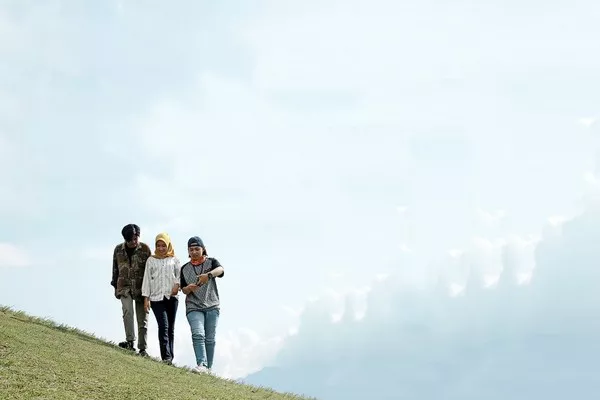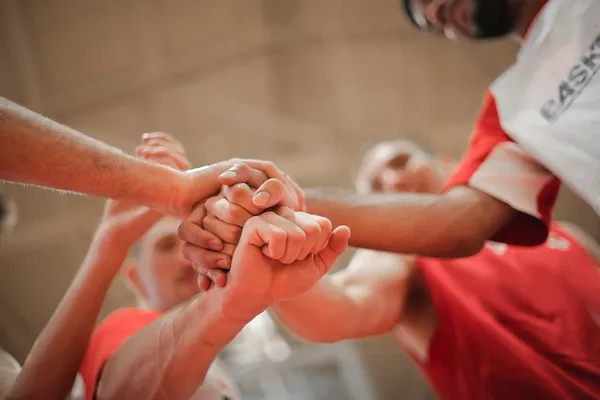The concept of a best friend transcends the boundaries of casual acquaintanceship, reaching into the heart of profound companionship. In our journey through life, the role of best friends is paramount, offering unwavering support, shared laughter, and a comforting presence. This article delves into the multifaceted dimensions of friendship, exploring what it truly means to have a best friend by your side.
Defining Friendship: The Foundation of Meaningful Connections
At its core, friendship is a bond forged through shared experiences, mutual understanding, and a genuine connection between individuals. Friends are companions who navigate the highs and lows of life together, offering support, empathy, and a sense of camaraderie. The term “best friend” elevates this connection, signifying a level of intimacy and trust that goes beyond the ordinary. A best friend becomes a confidant, a trusted advisor, and a pillar of strength, embodying the essence of meaningful companionship.
Shared History: The Tapestry of Memories
What distinguishes a best friend is the shared history that forms the tapestry of memories woven over time. From the inside jokes that bring forth fits of laughter to the shared triumphs and challenges that define the journey, a best friend is intricately linked to the narrative of one’s life. The ability to reminisce about the past, reflect on shared experiences, and create a repository of memories contributes to the unique and enduring nature of the best friend bond.
Mutual Understanding: A Silent Language
The depth of a best friendship is often characterized by an unspoken understanding that transcends words. Best friends share a silent language, an intuitive connection that allows them to communicate without verbalizing every sentiment. Whether it’s a knowing glance, a subtle gesture, or an empathetic silence, this unspoken understanding forms the bedrock of a best friend relationship. The ability to be truly seen and understood by another person is a defining aspect of what it means to have a best friend.
See Also: How to fix a friendship you ruined?
Reliability and Trust: Pillars of Support
Reliability and trust are pillars that uphold the foundation of a best friend relationship. Knowing that your best friend is someone you can count on, someone who will be there in times of joy and sorrow, creates a sense of security and comfort. Trust is the glue that binds the friendship, allowing individuals to be vulnerable, share their innermost thoughts, and rely on each other without fear of judgment. The reliability and trust embedded in a best friend dynamic foster an environment where both individuals can flourish and grow.
Emotional Support: A Shoulder to Lean On
A best friend is not just a companion in the good times but also a steadfast support system during challenging moments. The emotional support provided by a best friend is unparalleled, offering a safe space for vulnerability and authentic expression of feelings. Whether celebrating successes or weathering storms, a best friend stands as a pillar of emotional strength, offering a shoulder to lean on, an empathetic ear, and words of encouragement.
Laughter and Joy: The Heartbeat of Friendship
Laughter is the heartbeat of any strong friendship, and with a best friend, it becomes the melody that resonates throughout the journey. The ability to share joy, find humor in the mundane, and create moments of pure delight contributes to the richness of a best friend relationship. Laughter becomes a binding force, fostering an environment where both individuals can experience the simple pleasure of being authentically themselves.
Unconditional Acceptance: Embracing Flaws and Quirks
In the realm of best friendships, acceptance is unconditional. A best friend embraces the quirks, flaws, and idiosyncrasies that make each individual unique. There is a freedom to be oneself without fear of judgment or the need for pretense. Unconditional acceptance in a best friend relationship creates a space where authenticity flourishes, allowing both individuals to grow and evolve without the constraints of societal expectations.
Reciprocity: A Two-Way Street
Reciprocity forms the backbone of a healthy and enduring best friend relationship. The give-and-take dynamic ensures that both individuals contribute to the friendship, actively supporting each other’s growth and well-being. A best friend is not just someone who receives support but also someone who reciprocates, understanding the mutual investment required to sustain the bond. The balanced exchange of care, time, and energy reinforces the reciprocity that defines a true best friend connection.
Honest Communication: Navigating Truth Together
Open and honest communication is a cornerstone of any strong friendship, and it takes on added significance in the realm of best friends. The ability to express thoughts, feelings, and concerns openly fosters a climate of trust and transparency. Best friends navigate truth together, engaging in meaningful conversations that deepen the connection and strengthen the bond. Honest communication allows both individuals to understand each other on a profound level, contributing to the longevity of the friendship.
Adaptability: Growing Together
As individuals evolve and life unfolds, a best friend dynamic requires adaptability. The ability to grow together, accommodate change, and navigate life’s twists and turns is a testament to the resilience of a best friendship. Whether it’s adjusting to new life stages, career paths, or personal transformations, a best friend relationship is characterized by adaptability and the willingness to embrace the ever-changing nature of life’s journey.
Empathy and Compassion: Walking in Each Other’s Shoes
Empathy and compassion are the bedrock of a best friend’s ability to understand and support one another. A best friend is attuned to the emotional landscape of the other, walking in each other’s shoes and offering genuine compassion in times of need. The capacity to empathize creates a connection that transcends individual experiences, fostering a deep understanding of the joys and challenges that shape each person’s life.
Supporting Individual Growth: Encouraging Dreams
A best friend not only supports who you are but also encourages who you want to become. The friendship becomes a catalyst for individual growth, with each person cheering on the other’s aspirations, dreams, and personal development. The support extends beyond the comfort zone, pushing both individuals to reach their full potential and celebrating the milestones achieved along the way.
Forgiveness and Resilience: Weathering Storms
No friendship is immune to challenges, and a best friend relationship is no exception. What sets it apart is the resilience to weather storms and the capacity for forgiveness. Best friends understand that imperfections are a part of the human experience, and their ability to forgive and move forward strengthens the bond. The resilience of a best friend relationship lies in the commitment to overcome obstacles together and emerge stronger on the other side.
Conclusion
In the grand tapestry of life, a best friend is a cherished thread that weaves through the fabric, adding warmth, color, and depth to the journey. The essence of what a best friend truly means goes beyond mere companionship; it embodies shared history, mutual understanding, reliability, and trust. A best friend is a confidant, a source of emotional support, and a companion through life’s myriad experiences. Laughter, joy, and unconditional acceptance form the heartbeat of the friendship, while reciprocity, honest communication, and adaptability contribute to its longevity. Empathy, compassion, and the capacity for forgiveness underscore the resilience of a best friend dynamic. Ultimately, a best friend is not just someone you share moments with; they are the person with whom you share the very essence of who you are, making the journey of life richer, more meaningful, and profoundly interconnected.
Related topics:



























